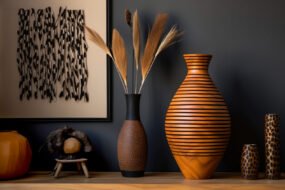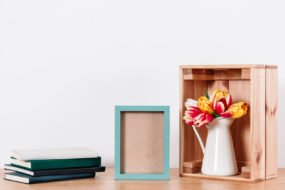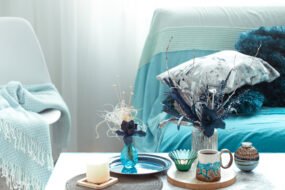
Creating a beautifully designed interior space can enhance your home’s comfort, functionality, and aesthetic appeal. Whether you’re redecorating a single room or overhauling your entire home, thoughtful interior design can make a significant difference. Here are some practical tips to help you transform your living spaces with style.
1. Start with a Plan
- Assess Your Space: Before you begin, take a close look at the space you’re working with. Measure the dimensions, note any architectural features, and consider the room’s natural lighting.
- Define Your Style: Identify your personal style and preferences. Do you lean towards modern, minimalist, rustic, or eclectic designs? Having a clear style direction will guide your choices.
- Create a Mood Board: Gather inspiration from magazines, websites, and social media. Create a mood board to visualize your ideas and ensure a cohesive design.
2. Choose a Color Palette
- Consider the Mood: Colors significantly impact the mood of a room. Soft, neutral tones create a calming atmosphere, while bold colors add energy and vibrancy.
- Use a Color Scheme: Select a color scheme that complements your style. A popular approach is the 60-30-10 rule: 60% dominant color, 30% secondary color, and 10% accent color.
- Test Samples: Before committing, test paint samples on your walls. Observe how they look in different lighting throughout the day.
3. Focus on Lighting
- Layered Lighting: Combine ambient, task, and accent lighting to create a well-lit and versatile space. Use ceiling lights, table lamps, floor lamps, and wall sconces.
- Natural Light: Maximize natural light by using sheer curtains or blinds. Mirrors can also help reflect light and make a room feel brighter and more spacious.
- Statement Fixtures: Consider incorporating statement lighting fixtures, such as chandeliers or unique pendant lights, to add a touch of elegance and personality.
4. Select Furniture Wisely
- Scale and Proportion: Choose furniture that fits the scale of your room. Oversized furniture can overwhelm a small space, while too-small pieces can make a large room feel sparse.
- Functional Pieces: Opt for furniture that is both stylish and functional. Multi-purpose pieces, like storage ottomans or sofa beds, are great for maximizing space.
- Quality Over Quantity: Invest in a few high-quality pieces rather than filling the room with inexpensive items. Quality furniture lasts longer and often provides better comfort and support.
5. Incorporate Textures and Patterns
- Mix and Match: Combine different textures and patterns to add depth and interest to your design. Use a mix of fabrics, such as velvet, linen, and leather, as well as patterned rugs, pillows, and throws.
- Balance: Balance bold patterns with solid colors to avoid overwhelming the space. For example, if you have a patterned sofa, pair it with solid-colored cushions.
6. Add Personal Touches
- Artwork and Décor: Display artwork, photographs, and décor items that reflect your personality and interests. Group similar items together to create a cohesive look.
- Plants: Incorporate indoor plants to bring life and freshness to your space. They add a natural element and improve air quality.
- Books and Collections: Show off your favorite books and collections. Use shelves, display cases, or coffee tables to keep these items organized and accessible.
7. Pay Attention to Details
- Hardware and Fixtures: Update hardware and fixtures, such as door handles, cabinet knobs, and faucets, to give your space a polished look.
- Textiles: Use textiles like curtains, rugs, and cushions to add color, texture, and comfort. Choose materials that complement your overall design scheme.
- Accessories: Small accessories, like candles, vases, and decorative trays, can make a big impact. Arrange them thoughtfully to enhance the room’s aesthetic.
8. Maintain Balance and Harmony
- Symmetry: Use symmetry to create a sense of balance and order. Pair matching lamps on either side of a sofa or arrange furniture in a symmetrical layout.
- Focal Point: Establish a focal point in each room, such as a fireplace, a piece of artwork, or a statement piece of furniture. Design the room around this focal point to create a cohesive look.
- Flow: Ensure there is a natural flow between rooms. Maintain a consistent style and color scheme to create a seamless transition from one space to another.
9. Embrace Minimalism
- Declutter: Keep your space clutter-free by regularly decluttering and organizing. Only keep items that you love and use.
- Clean Lines: Opt for furniture and décor with clean lines and simple designs. This creates a sleek, modern look that feels open and airy.
- Negative Space: Don’t be afraid of negative space. Allowing some empty space in a room can make it feel more spacious and less crowded.
10. Stay Flexible
- Seasonal Updates: Refresh your space with seasonal updates. Swap out cushions, throws, and décor items to reflect the changing seasons and keep your space feeling fresh.
- Adapt to Trends: While it’s important to create a timeless design, don’t be afraid to incorporate trends that resonate with you. Just be sure to balance trendy items with classic pieces to avoid a dated look.
- Personal Growth: Your style may evolve over time, so be open to making changes and updates as your tastes and needs change.
Conclusion
Interior design is an exciting and personal journey that allows you to create a space that reflects your unique style and meets your needs. By planning carefully, choosing the right colors and furniture, and paying attention to details, you can transform your home into a beautiful and functional haven. Whether you’re starting from scratch or refreshing an existing space, these tips will help you achieve a stylish and harmonious interior design. Happy decorating!
Feel free to add your own experiences, favorite design resources, or additional tips to personalize this post. Happy designing!








